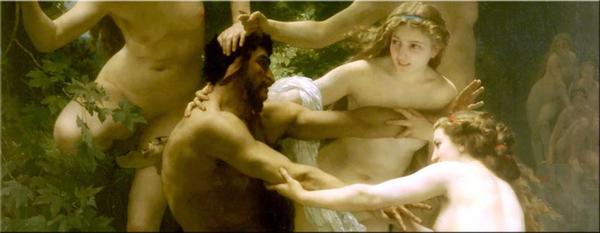| Nymphs and Satyr | 2005-08-18 11:40 2 comments |
 by Flemming Funch by William-Adolphe Bouguereau, 1873. Bigger here |
| ||
|
| [< Back] [Ming the Mechanic] |
2 comments
7 Oct 2005 @ 15:46 by rayon : Trying to see the meaning| [< Back] [Ming the Mechanic] | [PermaLink]? |
| Main Page: ming.tv |